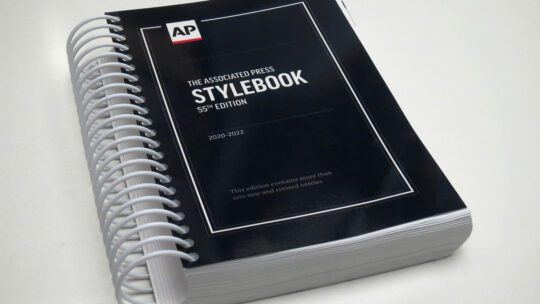
[Editor’s Note: One of the most popular articles on prnewsonline.com is a review and summary of AP style. We took that as a sign and decided to deliver a series of AP style updates for newsworthy topics. Previously, the series looked at terms for writing about cryptocurrency and diversity, equity and inclusion (DEI), among other topics.]
For this installment, we explore financial and economic terms. An extensive list is found at the Associated Press Stylebook online directory, under Financial Market Topical Guide.
Standard & Poor's 500, S&P 500
Use these terms when mentioning the market indicator most professional investors use when assessing stock performance. It encompasses 500 top companies in leading US industries. Use Standard & Poor's 500 index on first reference, S&P 500 on subsequent references.
Example:
This fund is diversified across economic sectors. It tracks the Standard & Poor's 500 index with low annual turnover and low tracking error.
bear market
Use in reference to declining stock prices during a prolonged period, generally a 20 percent or larger decline in broad stock indexes. The most recent bear market for the S&P 500 before June 13, 2022, was Feb. 19, 2020, through March 23, 2020. It was the shortest on record.
Example:
It is expected that during a bear market nearly all stocks will decline.
bull market
A period of generally rising stock prices, often defined as a 20% or larger increase in broad stock indexes, such as the S&P 500.
Example:
The 1920s brought the great bull market in which the value and quantity of stocks traded soared.
e-commerce
Use a hyphen in all e- words except email and esports.
Example:
e-book, e-reader, e-commerce,
Correction
In the context of finance, this term refers to when a stock, bond, commodity or index declines 10 percent from a recent peak. Corrections are common during bull markets, and are considered normal and even healthy.
Example:
During the record 11-year bull market that started in March 2009, the S&P 500 had five corrections, the last of which happened in late 2018.
Federal Reserve
The central bank of the United States. It comprises the Federal Open Market Committee, which sets interest rates; the Federal Reserve Board, the regulatory body made up of Federal Reserve governors in Washington; and the Federal Reserve System, which includes the Fed in Washington and 12 regional Fed banks. Use the Federal Reserve on first reference, the Fed on second reference.
Example:
As chairman of the House Banking Committee, she framed and passed the Federal Reserve Bank Law. In this position she contributed largely to the new Fed system.
gross domestic product
A common measure of economic growth, reflecting the total value of goods and services produced in a country. Economists often refer to the GDP. Spell it on first reference and define it in stories for clarity.
Example:
The share of agriculture in gross domestic product in these countries is 30%. It accounts for one-seventh of the GDP.
percent, percentage, percentage points
Use the % sign when paired with a numeral, with no space, in most cases.
Example:
The S&P 500 future contract was down 3.2% and the future for the Dow dropped 3.3%.
In casual uses, employ words rather than figures and numbers
Example:
She said he has a zero percent chance of winning.
Be careful not to confuse percent with percentage point. A change from 10% to 13% is a rise of 3 percentage points. This is not equal to a 3% change; rather, it's a 30% increase.
Example:
Republicans passed a 0.25 percentage point tax cut. Not: Republicans passed a 0.25 percentage points tax cut or Republicans passed a tax cut of 0.25 of a percentage point.
Great Recession
Refers to the recession that began in December 2007 and became the longest and deepest since the Great Depression of the 1930s. It occurred after losses on subprime mortgages battered the US housing market and financial system.
Example:
Business further declined in the Great Recession that began in 2008.
Dow Jones Industrial Average
This market indicator comprises 30 leading US stocks. S&P Dow Jones Indices LLC calculates and publishes the average. Always use the full name on first reference. On subsequent references, use the Dow. The Dow also is acceptable in summaries and headlines.
Example:
The Dow Jones Industrial Average is down 5 points at 2,913. At the close of trading, the Dow was off 1.92 points.
Nasdaq composite
A major US stock index, often referred to in conjunction with the Dow Jones Industrial Average and the S&P 500 index. The Nasdaq composite is an index of all the stocks listed on the Nasdaq Stock Market. On second reference: the Nasdaq.
Example:
Seesawing prices for technology shares left the Nasdaq composite index little changed.
Andrew Byrd is a media associate at PRNEWS
